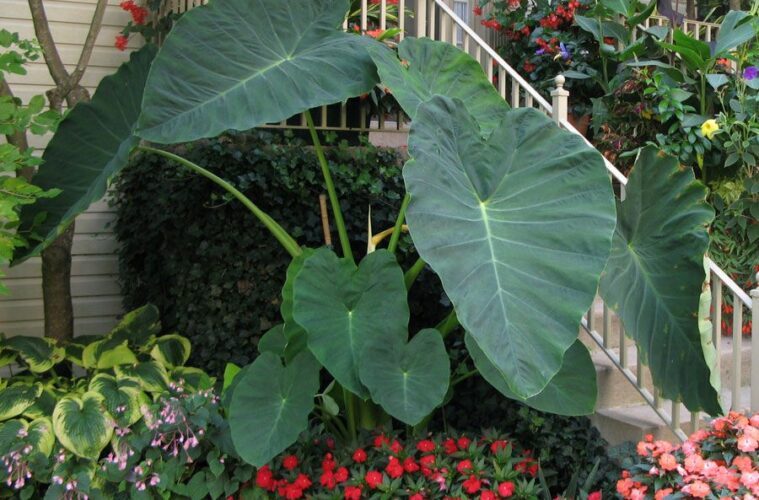Want to add some drama to the garden and the containers? Elephant Ear plants are the solution. As the name suggests, it has fuzzy round shape leaves like the ear of the elephant. It is a sturdy perennial that you can not only grow as an indoor houseplant but also grow as an outdoor garden plant. Common names of these plants have – Elephant Ear, taro, and coco yam.
Basically, the elephant ear comes under the tropical plants category. It is a unique plant that is known for its leaves, not for the flowers. In particular, three plant genres- Colocasia, Alocasia, and Xanthosoma have a common name of Elephant Ear. The most popular is Colocasia esculenta and its second name is “taro”.
Things To Keep in Mind While Growing Elephant Ear
Best Season to Grow
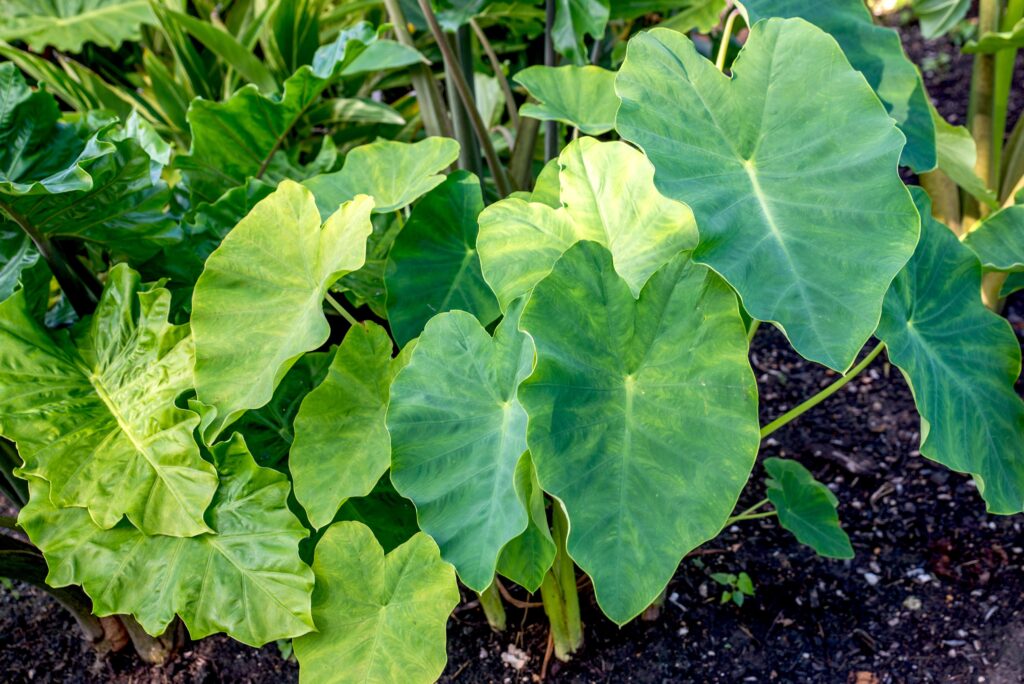
source: thespruce.com
Generally, these plants will flourish in the season of spring after all the odds of winter has passed away. Furthermore, their leaves will grow to the full size within the span of only two months being the fast-growing plants. At least 70 degrees Fahrenheit temperature is necessary for the proper growth of Elephant Ear Plants. If you wish, you can also plant them in the early summer.
Soil
Elephant Ear Plant is a native wetland plant so it grows in fertile, loamy, and slightly acidic soil. The requirement for water is huge to grow this plant. You need to choose large containers to grow different varieties of this plant. This tender herbaceous plant comes from the Araceae family with a clumping growth habit. In short, we can say that they can grow in moist land and the soil pH ranges from 5.5 to 7.0 (acidic).
Sunlight To Receive
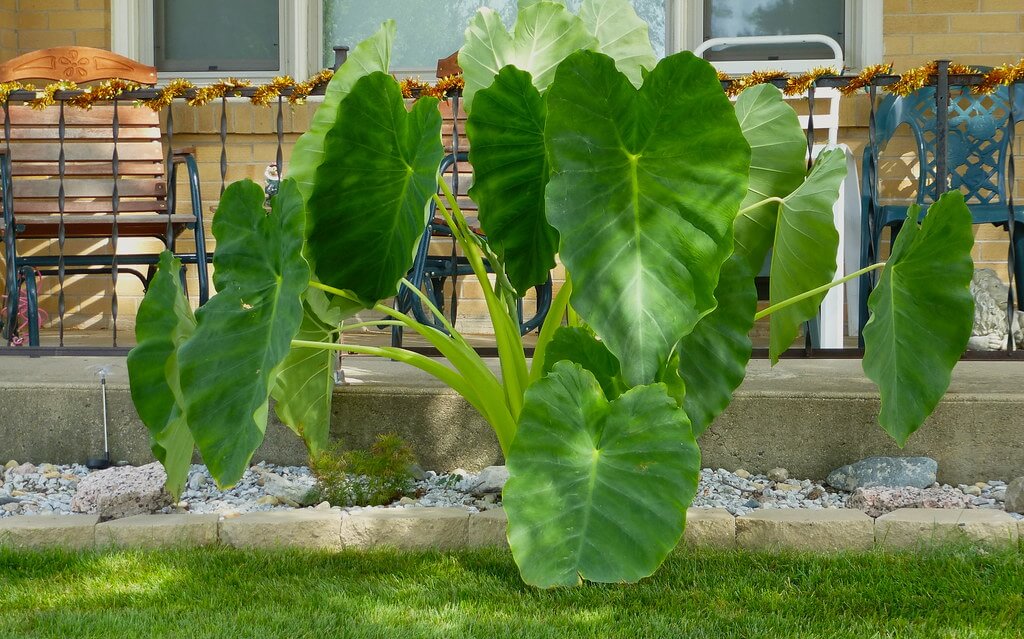
source: agrikulturetoday.com
These plants thrive in partial shade or filtered sunlight. It should be shielded from strong gusts and make sure that they do not dry out. Full sun to part shade is also a suitable condition for Indoor Elephant Ear Plant to grow. Take care while planting this plant as they need well-warmed soil. Prefer a dappled sun location for the best result. Cultivars are the species of this plant that needs more sunlight to maintain its dark color leaves.
Quantity of Water Needed
It is compulsory to keep The Elephant Ear Plant moist consistently. They can certainly survive in 6 inches of standing water. Although it is better to water the plants when the soil is slightly wet rather than saturated. Never allow the soil to completely dry out. If you plant them in containers, they need extra care in terms of watering.
Water them daily or several times per day if you want the plants to grow in the containers. You can use the soil’s surface as your guide. If it doesn’t feel moist enough, add water until it does.
Fertilizers
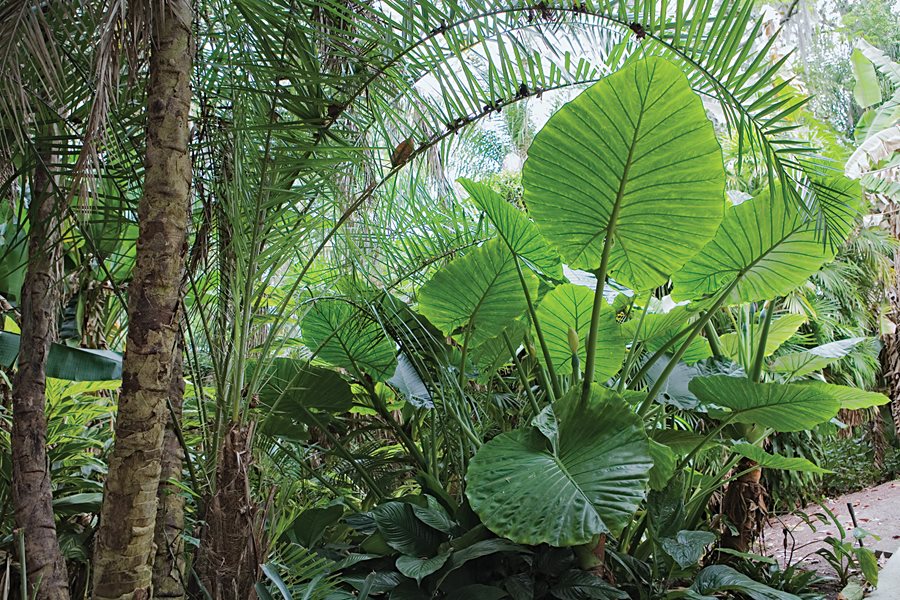
source: gardendesign.com
Elephant Ear is a large-leaved tropical plant so it requires a significant amount of fertilizers. You can apply water-soluble high-nitrogen fertilizer fortnightly. Apart from that, you can also apply the varieties of fertilizers that have micronutrients in them.
Leaves
These exotic plants have huge heart-shaped leaves. Therefore, they are used as accent plants. Additionally, they are commonly used in tropical-themed gardens or bog gardens. Their leaves can grow 3 feet long and 2 feet wide in tropical areas in hot and humid climates. In winters, leaves grow smaller in size but the impression remains constant.
Five Tips to Make the Most Out Of It
Remove any flowers that form so all the energies can be consumed to grow more attractive leaves.
If you place the Indoor Elephant Ear Plant outside your house in the spring season when all the frost is gone, it will bloom beautifully.
Match the Elephant Ear Plants with other tropical plants like cannas, caladiums, and coleus to make a summer jungle garden.
For the Best Color Combination, Purple foliage species go well with silver, pink, and chartreuse plants.
In the spring season when blooming bulbs go dormant, you can place this plant into a container to fill the bare spot in your outdoor garden.
What To Do If Elephant Ear Plants Have Some Common Problems?
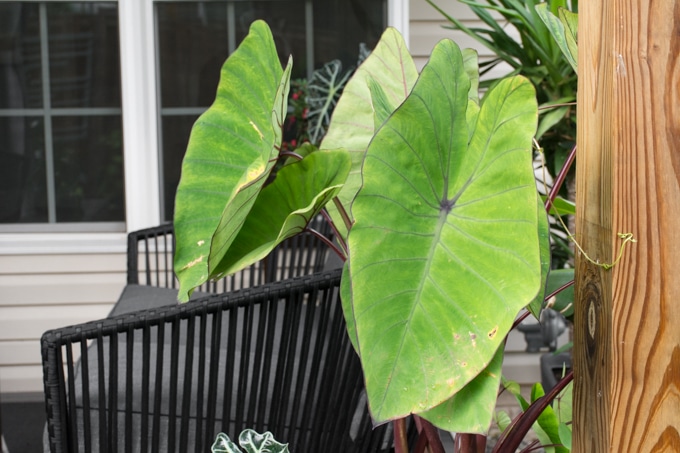
source: bybrittanygoldwyn.com
As they are water-lover plants, fungal infection is a common problem.
If the leaves start yellowing, it is a sign that they become dormant for the season. Don’t worry! Cut the yellow leaves and wait for the next spring season to grow them.
Leaves start to drop when there is an inadequate amount of light, water, or fertilizer is available to them. So provide them better environment and water. Leaves also drop due to the heaviness or extra weight of the leaf. Give them support with the stakes.
Stunted or pale leaves signify that your plant needs more nutrition. So, in that case, provide good quality fertilizers.
When the plant faces the problem of wilting, change the place of the plant and select a shadier spot. Water them frequently.
Some species are toxic to pets and humans. Keep them away from these plants.
Can I Grow The Elephant Ear Plants Indoors?
Many times people prefer to keep Elephant Ear Plants indoors. You can grow them as houseplants. The only thing you should keep in mind while growing them indoors is the location of the plants. They must be in an area with indirect light that is bright because direct sunlight will burn the leaves. Keep moisture in the soil and mist the leaves for a fresh look.
Conclusion
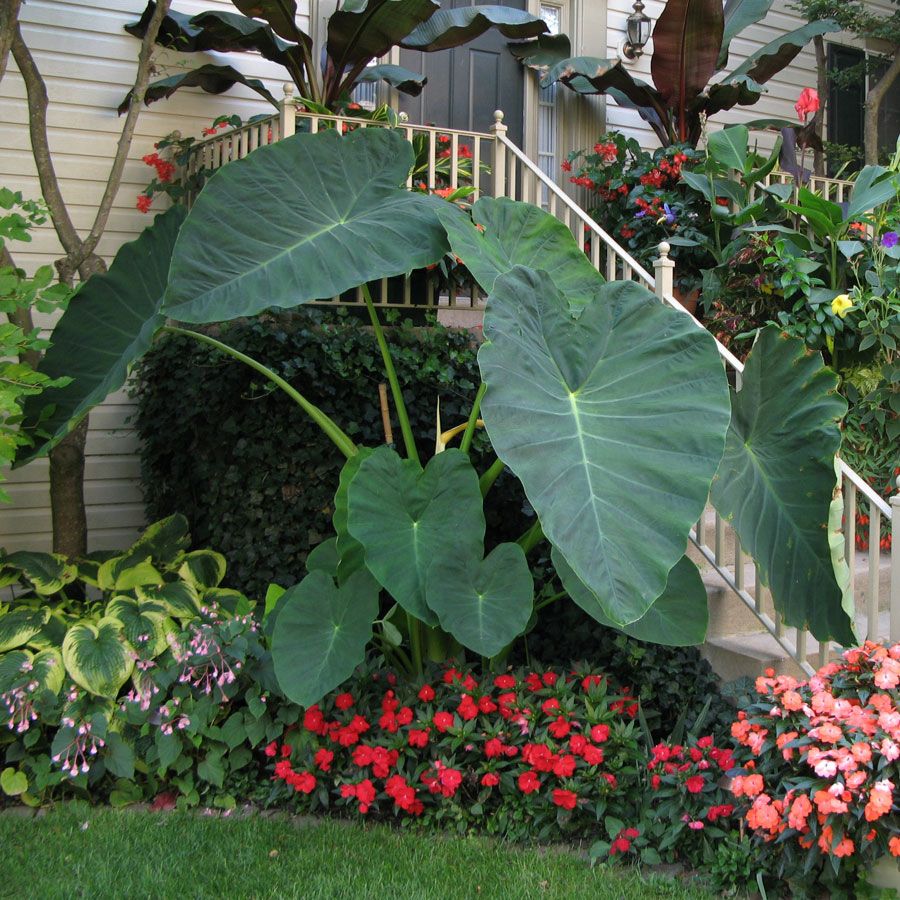
source: pinterest.com
Elephant Ear Plants are best suitable for patios and pools because of their spectacular foliage, which has a strong tropical feel, and their capacity to grow to quite big sizes. Whether you choose to grow them in a flower bed or you grow them in a container, Elephant Ear plants are always fun to grow.
Plant these wonderful species as a potted plant outside during warmer months and bring them indoors for cooler months. You will find them easy to maintain. Moreover, you can grow them as a specimen plants. So visit the nearest nursery to purchase these plants and give your garden lush green vibes with these exotic Elephant Ear Plants.

